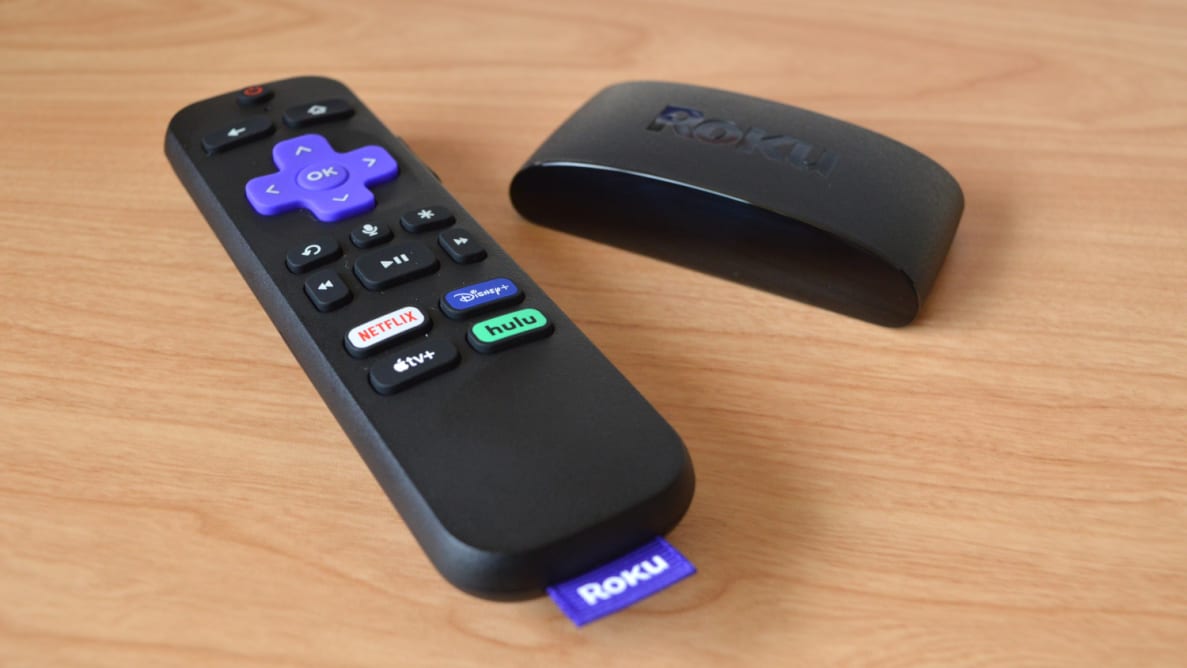Pros
-
Simple interface
-
Excellent smart home support
-
AirPlay 2
Cons
-
No Dolby Vision
-
No headphones jack on remote
Of course, the device isn't flawless. The Roku Express 4K+ doesn’t support Dolby Vision, unlike the similarly-priced Google Chromecast with Google TV. And, unlike some Roku remotes (including the new add-on Voice Remote Pro), the remote doesn’t have a headphone jack.
But those are small complaints, and many won’t miss those features in the first place. You’ll still get a responsive interface, a device that supports all of your favorite streaming devices, and the ability to use it with your smart home, even if you’re plugged into the Apple ecosystem. I’ve been using the new Roku Express 4K+ to find out how well it competes in the growing streaming landscape.
About the Roku Express 4K+
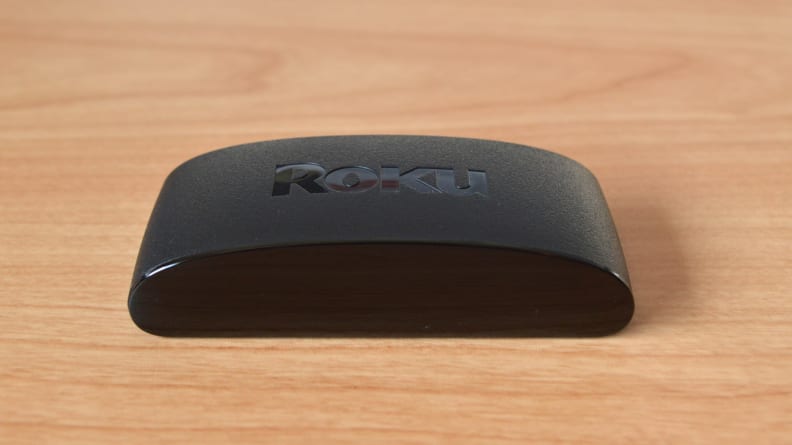
The Roku Express 4K+ offers a slim profile that slots between bigger boxes and more portable streaming sticks.
The Roku Express 4K+ replaces the Roku Premiere+, and joins the standard Roku Express, which is the lowest-end Roku device that the company offers on its website. It also joins Roku’s higher-end products, including the Roku Streaming Stick+, the Roku Ultra, and the Roku Streambar.
Here’s a quick rundown of the specs on offer by the Roku Express 4K+.
- Resolution: Up to 4K at 60 frames per second
- HDR: HDR10, HDR 10+, HLG
- Ports: HDMI
- Audio: DTS Digital Surround over HDMI, Dolby-encoded audio over HDMI
- Remote: Voice remote with streaming shortcuts
- Smart home support: Google Assistant, Amazon Alexa, Apple AirPlay, Apple HomeKit
- Dimensions: 0.8 inches x 3.4 inches x 1.5 inches
- Weight: 1.6 ounces
In general, Roku’s lineup can get confusing, and the way Roku differentiates the Roku Express 4K+ comes down to a few features that not everyone will want or care about. For example, the Roku Ultra is the only Roku device that supports the Dolby Vision HDR format, which is a little frustrating to see. Also, as mentioned above, the Roku Express 4K+’s remote doesn’t have a headphone jack, so to listen through headphones you’ll need to use headphones connected to your phone through the Roku app.
Compared to the Roku Streaming Stick+, there are a few minor differences that will only matter to some. For example, the Streaming Stick+ has Roku’s upgraded wireless tech that may give it a better Wi-Fi connection, though the Express 4K+ was more than capable in my testing. The Streaming Stick+ also has that thumb drive-style form factor that plugs directly into your TV, which might make it a better option for wall-mounted TVs.
What we like
A simple interface
Roku has long offered a simple, easy-to-use interface that puts your favorite streaming services front-and-center. The interface is the same or similar across all Roku products, including Roku TVs, and that means that if you’ve ever used a Roku device before, you know how to navigate it. Even if you haven’t though, it’s simple, and you’ll get the hang of it relatively quickly.
Setting up the device is pretty easy too. You’ll choose your language and either sign in to Roku or create an account, after which you can install your preferred streaming apps (or your previous device’s apps install automatically). The device will also install the latest software, if it doesn’t have it already. Roku’s voice control has also gotten a lot better, and can help during this process — I was able to use my voice to enter my email address and password (letter by letter), which is a whole lot easier and quicker than trying to type it out.
Once you get into the device, you’ll see a grid of all the streaming services you chose to install, along with options for settings, a search feature, and so on. Roku has generally steered clear of adding extra complications to the home screen, unlike the likes of Vizio, Google, and so on. It’s refreshing to see.
Smart home and AirPlay support
Roku has supported Google Assistant and Alexa for some time now, but recently, it took smart home support to the next level. Now, all Roku streaming devices and Roku TVs will support AirPlay 2 and HomeKit, meaning you can integrate them into your Apple ecosystem.
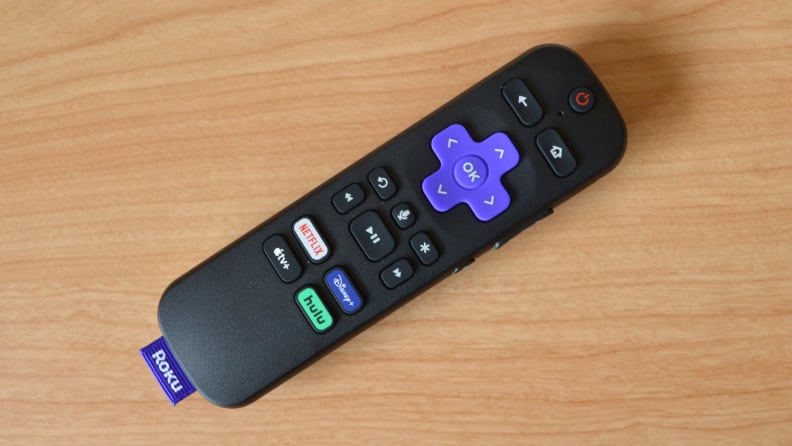
The remote's new streaming buttons are more useful for most, while the microphone button allows for easy voice control and search.
AirPlay support is pretty straightforward, and enabled by default. Through AirPlay, you can stream content from your iPhone, MacBook, iPad, and so on. That means that if Roku doesn’t support a service you want (like YouTube TV, at the time of this writing), Apple fans can at least still beam it from a supported Apple device.
HomeKit takes a little more work, but not much. In the settings, you can choose to enable HomeKit, after which you’ll scan a QR code in the Home app, and select which room your TV is in. Then, you’ll be able to turn your device on and off from the Home app, and integrate it into any smart home automations.
It works well, but functionality is very basic. You can’t, for example, control specific functions of the device, the volume, or anything else — just whether it’s on or off. Still, that can help. Examples of automations that you could use include the ability to turn your Roku off when you leave the home, or the ability to dim your connected smart lights when you turn on the device.
Google Assistant and Alexa work largely the same way they did before. Through these voice assistants, you can turn your Roku on and off, plus search for content, launch specific apps, and more. It’s more comprehensive than the HomeKit support, though you can still use the voice remote for these features without needing Assistant or Alexa, if you want.
Solid hardware
The Roku Express 4K+ is built to be a small, inexpensive streaming device, and as such you won’t get a whole lot of connection ports. A good example of a basic port that isn’t included is Ethernet—however, you can get a wired connection with an adapter that connects to the MicroUSB port on the back.
Apart from that, the hardware isn’t bad at all. The box itself is small and slim, and it’s easy to hide if you want to thanks to the included double-sided tape. The remote connects through Bluetooth and not infrared (thankfully), so you don’t need to worry about getting line-of-sight.
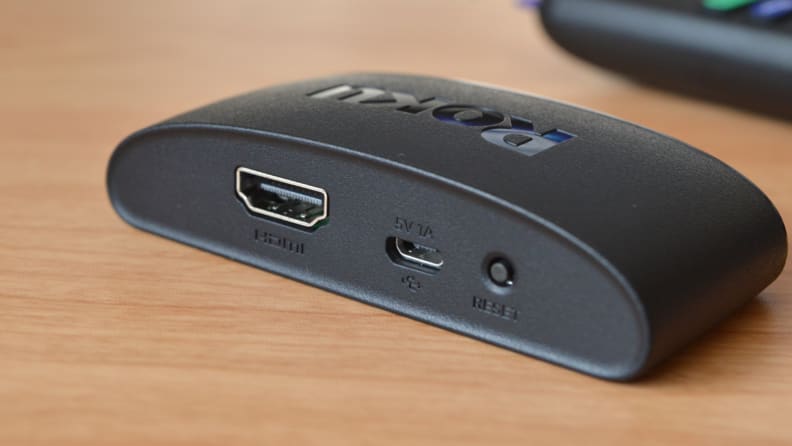
The back ports are few, but you've got everything you should need besides Ethernet.
The remote is easy to use and very easy to understand. You’ll get basic software controls, volume controls, voice controls, and quick-access buttons to Netflix, Disney+, Apple TV+, and Hulu. It’s nice to see four of the bigger streaming services here. The remote to my Roku-powered TV includes buttons to Starz and Sling, and while those services are great, they’re far from the most-used. The biggest downside to the remote is that it uses AAA batteries. I hope Roku moves to rechargeable remotes for all devices soon, as it has for its $30 add-on remote, the aforementioned Voice Remote Pro
It’s important to note that I did have an issue with the remote not being able to turn the Express 4K+ on or off, and I found that others experienced a similar issue. I was able to resolve it by heading into settings and hitting the “set up remote for TV control” option, but it was still a confusing issue, especially considering HomeKit was still able to power the device on and off.
An excellent price
Of course, perhaps one of the best things about the Roku Express 4K+ is the fact that it’s very inexpensive. At $40, it’s one of the cheapest ways to get 4K streaming with support for HDR and a responsive interface. Compare that to the new Apple TV 4K, which comes at $180, and you can see why it’s an excellent budget pick.
Of course, the other main competitor that isn’t a Roku device is the Google Chromecast with Google TV. If you prefer to stick within Google’s ecosystem, then it’s the way to go, even though it costs $50. That said, Google TV is a little more complicated to navigate, and you won’t be able to use it with systems like Apple HomeKit.
What we don't like
No Dolby Vision
Currently, the Roku Ultra is the only Roku device that supports Dolby Vision, which is one of the more common HDR formats. That’s a little frustrating, and means that you won’t be able to enjoy Dolby Vision streaming content in all of its glory.
It’s especially frustrating given the fact that the Chromecast with Google TV does support Dolby Vision, for a similar price. Thankfully, the Express 4K+ does still support HDR10 and 10+.
No headphones
Roku offers a few different remotes, and while they all look the same or similar at first glance, there are some pretty major differences. One of those is the inclusion of a headphone jack, which is an excellent way to quickly enter a private listening mode. As someone who regularly games or watches TV while my girlfriend works in the same room, this is a very helpful feature.
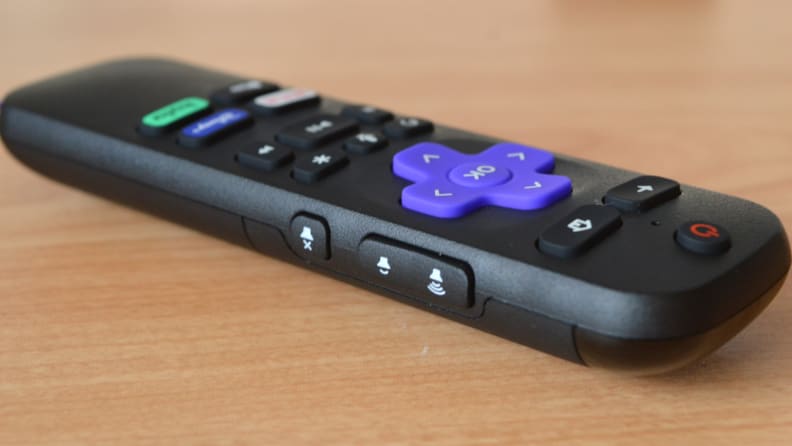
We wish Roku would extend the headphone jack to the lower-priced streamers, but you can use the app instead.
Unfortunately, however, the Express 4K+ does not come with that upgraded remote, and you can’t directly connect wireless headphones to a Roku device. Thankfully, you can listen wirelessly through headphones connected to your phone by using the Roku app, but it’s frustrating that this is the only option.
Interface is aging
The interface on offer by Roku devices is pretty simple and easy-to-navigate, but it has been more or less the same for years now. That’s not necessarily a bad thing, and I don’t want Roku to radically change how the interface works and is navigated through -- but it would be nice to get a new paint job. Because it has stayed the same for so long, it’s starting to look a little dated.
Now, of course, I appreciate the feature improvements, like AirPlay 2 support -- and I’d definitely prefer more feature additions than an interface update. But a refresh would still be nice.
Should you buy it?
Definitely, it's an excellent way to stream on a budget
If you’re looking for a capable, easy-to-use streaming device on a tight budget, the Roku Express 4K+ is an excellent option. In fact, if you simply want the cheapest streaming device you can get, this is the one I would go for in 2021—the standard Roku Express is fine, but it’s worth avoiding anything that doesn’t support 4K resolution.
The Express 4K+ isn’t perfect. I wish there was better support for headphones, and Dolby Vision support would be nice too. If you’ve got a Dolby Vision TV, or you think you might want one in the future that supports this common HDR format, we’d recommend looking at the Google Chromecast with Google TV (even if the name is a mouthful), or potentially Amazon’s Fire TV Stick 4K, both of which offer Dolby Vision for a few dollars more. Or you could simply step up to the Roku Ultra, and get a few extras while you do.
But considering the addition of support for AirPlay 2 and HomeKit, the responsive interface, and low price, the Roku Express 4K+ is an excellent option.
Meet the tester
Christian de Looper is a consumer tech journalist with over a decade of experience. De Looper has covered all areas of the consumer tech industry, from smartphones to smart homes — and has attended all of the major trade shows, including CES.
De Looper has always been interested in consumer technology, but his love for gadgets and electronics blossomed into a full-blown passion when he started writing about it while completing his degree in audio production.
Since then, he has written for many of the top tech publications, including Digital Trends, Tom’s Guide, TechRadar, and many more. He loves getting his hands on all of the latest gadgets, but when he’s not reviewing tech, he can be found hanging out with his family or producing music.
Checking our work.
Our team is here to help you buy the best stuff and love what you own. Our writers, editors, and experts obsess over the products we cover to make sure you're confident and satisfied. Have a different opinion about something we recommend? Email us and we'll compare notes.
Shoot us an email